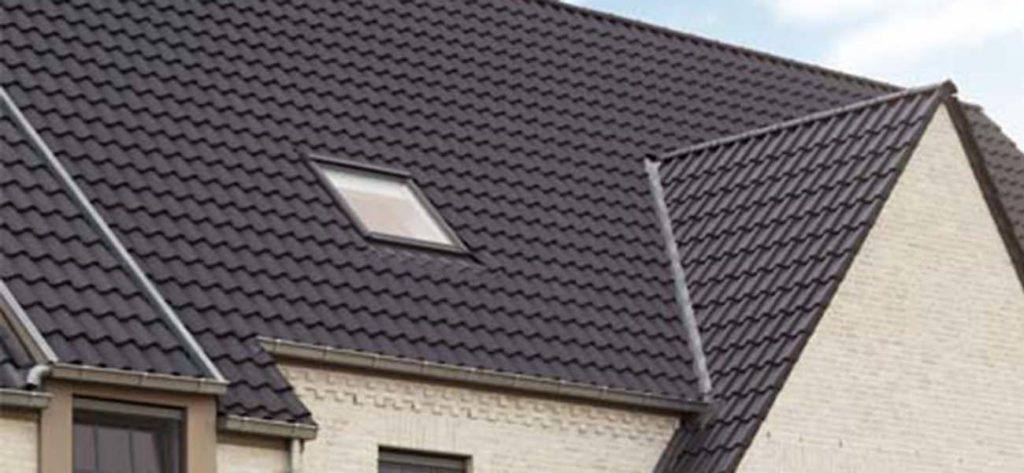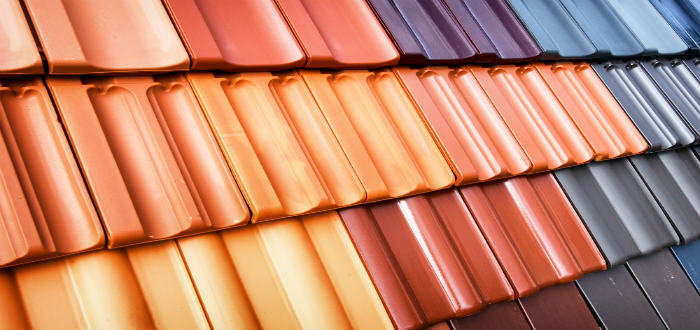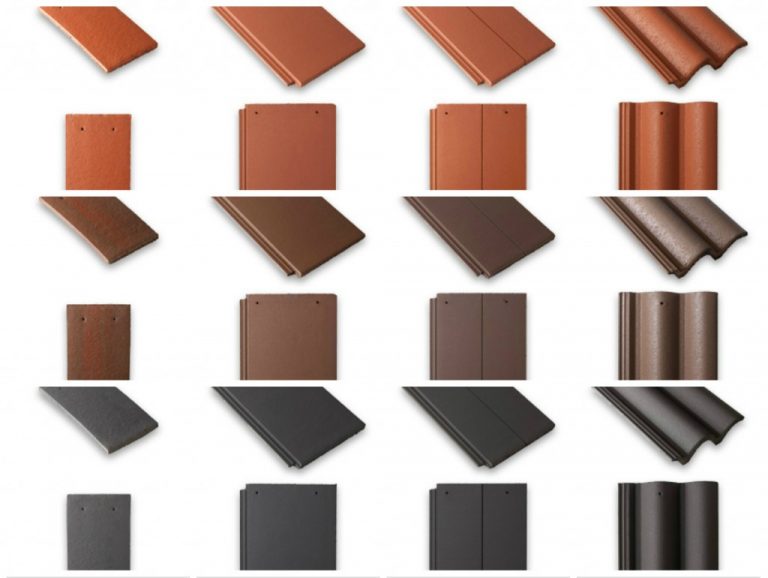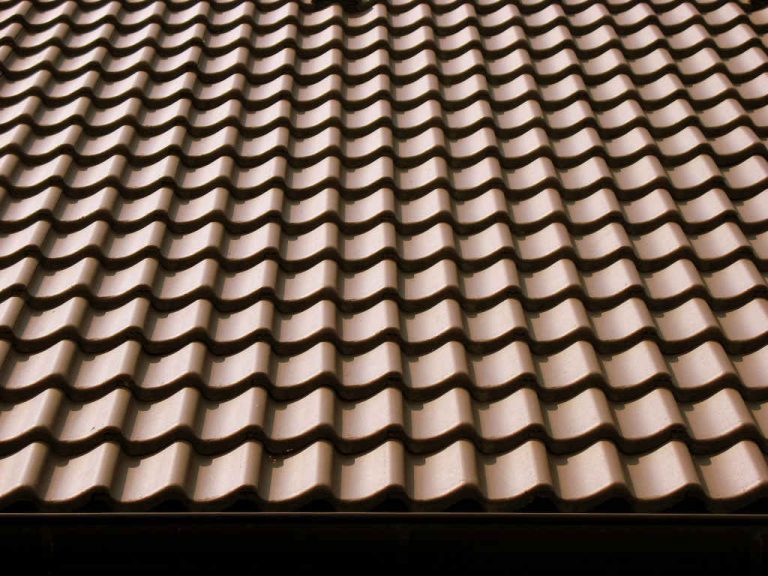A guide to different roof tile types
When it comes to finishing a roof, there’s an array of roof tile types to choose from, with options available in various materials, shapes, profiles and sizes. Choosing the right one often comes down to aesthetics, but other factors to consider will include the roof pitch, weight, weather resistance, sustainability and budget
One of the first things to consider when making a choice is the material of the tiles. Roof tiles come in a wide range of materials, and here at Marley, we specialise in providing clay tiles, concrete tiles and cedar shingles and shakes. Other options may include natural stone and fibre cement.
Clay tiles
A traditional favourite, clay tiles have been used for thousands of years. Modern clay tiles are available in hand-crafted or machine-made formats, with the two types differing mainly in terms of look and price
Concrete tiles
An alternative to clay or slate, Marley’s concrete roof tiles offer excellent performance and can provide the appearance of other more ‘natural’ products. Colour options are similar to clay, with a range of reds, oranges, browns and greys.
edar shingles and shakes
For a truly natural appearance, cedar shingles and shakes might be the perfect solution. They’re also one of the most sustainable roofing materials available. Since they are also very lightweight (weighing between 4.0 and 8.1kg per square metre), the carbon footprint of transporting them is minimal, and they’re easy to move around on site.

How to Choose the Best Option for You
Whether you need to use roof tiles for a new or old roof, it is important to choose carefully the most suitable for your roof. In this article you will find information on the most popular types of roof tiles and the prices that are sold in the market.
When it comes to roof tiles, there are a variety of colours, shapes and materials available, which can make it difficult to choose the right one. Comparing the features of different types of roof tiles will help to find the right choice for your home, so look at all the factors concerned. For instance, colour should match the style of your house and surrounding properties, the weight of tiles should be suitable for the strength of the roof and they should meet your budget as well as being water and weatherproof.
Slate Roof Tiles
Slate roof tiles can improve the appearance of your property and also increase its value. Slate tiles are made of 100% natural stone and they are extremely durable. If a slate roof is installed and maintained properly, it can last up to 100 years. They are also environmentally friendly as they can be recycled, if they outlast the building that they are installed on.
In addition, slate is a great natural material that is dense and also water-resistant. Furthermore, slate can withstand temperature changes, making it a wonderful (and popular!) roofing tile choice. Another advantage is that slate is also resistant to insects and corrosion and that it requires very little maintenance.
Disadvantages of slate roof tiles
The biggest disadvantage of slate roof tiles are the cost and the installation. Several types of slates can cost as much as 150 per square metre while the installation cost ranges from 25 – 45 pounds per m2. Another big drawback is the difficulty of finding a truly experienced roofer to handle the installation process with care, as slate tiles can also spall or shed layers

Selecting your roof tiles
Offering the home owner a wide choice of colours, shades and styles, roof tiles can be easier to work with, especially for the novice roofer. The UK is well looked after by companies operating at either end of the price spectrum. Larger companies like Marley, Russell and Sandtoft look after the mass market sector, whilst independent manufacturers like Dreadnought offer a more bespoke and traditional roof tile that is more suitable for prestige properties.
Interlocking Tiles – amongst the cheapest and most convenient way to cover a pitched roof, some are also suitable for low pitches. These roof tiles are large so you do not need a lot of them to cover a normal sized roof (just ten tiles is enough to cover one square meter). Interlocking tiles do not always work well on complex roof designs as they can be difficult to cut. Concrete interlocking tiles tend to be fairly chunky and may look cheap, whilst the higher quality thinner clay interlocking tiles can be pricey.
Pantiles – before interlocking tiles became fashionable, pantiles (tiles with an ‘S’ shaped profile) were popular, especially in the east of England. Pantiles work well on almost any type of roof adding a quality and perspective not found with plain or interlocking tiles. Many colours and profiles are available manufactured from either concrete or clay.
Plain Tiles – Plain tiles are a good option for traditional roof designs and are available in many shades and colours, both traditional and modern. It takes approximately 60 plain tiles to cover one square meter of roof, so they can take longer to install than interlocking tiles, but the end result can be very pleasing.
Clay or concrete, handmade, handformed or machine made?
Handmade – a handmade tile is one that is completely made by hand. Desirable especially in period properties or where you are looking for a unique appearance and a warmer, deeper colour or shade.
Machine made tiles offer the home owner a very standard and consistent roof cover. Translating into a cheaper price, the downside is that one roof may look like any another.
Handformed tiles are a middle ground choice that offer some of the unqiue character of a handmade tile but at a cheaper price.
Clay tiles – traditional “Spanish” style clay tiles are the most well-known tiles, but there are many other designs available today. Clay tiles tend to last slightly longer than concrete tiles (40-50 years). Whilst clay tiles are slightly more expensive than concrete, they are warmer in colour and are much less likely to fade as the tiles age,
Concrete tiles – Concrete tiles offer a cost advantage but may not be as durable or colourfast as clay tiles. Cheaper concrete tiles also tend to have the colour ‘painted’ on one side of the tile which is more likely to wear off in time.

CHOOSING THE RIGHT ROOF TILE FOR YOUR HOUSE
If you’re thinking about which roof to get for your house, be prepared to pick from possibilities that range from the familiar to materials you never knew existed. Some roofing materials, such as clay tiles, asbestos or fibre cement roof, and metal roofing, have remained virtually unchanged for a long period of time. But a considerable array of other roofing materials has joined them in the Indian market; from concrete and ceramic tiles to newer products made from asphalt /bitumen like roofing shingles, Onduline roofing sheets and Onduvilla roofing tiles. In this article, we’ll help you become more acquainted with your options and the features you should consider when comparing one to another.
With a roof making up 40% of a home’s overall design, selecting the right tile can have a huge impact on a project. Choosing the best materials will ensure the durability of your roof. Selecting the right tile for the roof design requires aesthetic, technical and financial considerations, including evaluating the product life cycle – such as material performance and environmental impact – without forgetting the complexity of the installation and the need for maintenance of the roof. Let us look further into each of these factors.
DESIGN
The look and design which is being achieved for any project will also dictate the roofing materials. Contemporary, traditional, flat or pitched roofing – these all need to be considered when specifying roof tiles. If you are looking for a roof covering with a complex design incorporating a lot of features and potential tile cuts, then it may be better suited to using bitumen-based products like Onduline or shingles since they are flexible, easy to cut and to get the right details.
ROOF SLOPE
The slope or pitch of your roof’s surface is a consideration that may eliminate some roofing possibilities, especially if the slope is low. All roof tiles have a minimum slope/ pitch requirement. A pitched roof is very effective at carrying and distributing not only the weight of the chosen covering, but also deals effectively with environmental factors such as wind, rainwater and snow. Onduline recommends a roof pitch/slope of minimum 15 degrees for its products.
LOOK AND STYLE
Because the roof is typically very visible from the street, appearance of a roof material will often dramatically affect the look of a home. The colour, texture, and type of material should be compatible with your home’s exterior finish and style. Be true to your home’s architectural style. For instance, asphalt shingles or metal roofing may not be the right choice for a traditional house design whereas roofing tile like Onduvilla may be a good choice since it has a similar clay tile look. In other words, choose a material that will be consistent with the design vernacular of your home.

Choosing a Roof Tile
Materials
The natural beauty of terracotta is built to last, with a 50-year performance guarantee.
Background
Terracotta tiles on average have 13 tiles to the square metre, although this will vary with the complexity of the roof design. They are designed to interlock at both the head and the sides and can be laid in either a cross bond or straight bond fashion, depending on the profile.
Profile
The profile refers to a tile’s shape and design at its cross-section. This can be either flat or shaped. A key consideration when choosing a profile is the pitch of your roof, as well as the architectural style of the house. In the wet, the steeper the roof pitch, the faster the rainwater will run off it. The channels in shaped profile tiles also act as a natural watercourse for rain.
Colour & Finish
Next, it’s colour, one of the most fundamental influences on the style, character and essence of your home
Colour Selection
When it comes to colour, it’s easy to feel overwhelmed by the sheer number of options available. But by planning well in advance and following a few simple guidelines, you can create a look you will admire for years to come:
A good place to start is by collecting reference material – photos you’ve taken yourself or from magazines and brochures of inspiring colour schemes.
The architectural style of your home and its environment (including surrounding homes) is a major factor. Now’s not necessarily a good time to unleash that desire to be original!
As a general rule, look for colours that together are either in harmony or contrast. Primary considerations in selecting roof colour are the guttering and fascia finish of your home, as these are in closest proximity. Next are exterior walls, garage doors and window frames.
Currently, we are seeing a move toward lighter colours that blend with the natural environment. For a more substantial appearance, roof colour should be darker than walls.
Trust your instincts and choose what’s right for you, not your friends or family.